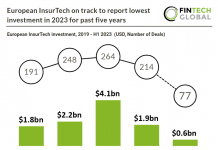Insurance underwriting processes are undergoing a period of transformation. With the explosion of data and growing importance of customer experience, insurers must act now.
A recent blog post from Quantexa explored what the future of digital underwriting holds, including the challenges it faces, and what insurers should be doing to succeed.
The insurance industry has often been critiqued for being slower to innovate than other more dynamic industries. Now, it is undergoing a period of disruption as insurers race to digitalise their offering. Underwriting in particular is under examination.
The ability to accurately evaluate the risk of insuring a customer and pricing their coverage appropriately is the backbone of the industry. Quantexa said that the use of automation, more data, and artificial intelligence (AI) has given way to a “new approach” of underwriting – so-called intelligent underwriting, or digital underwriting.
Data, and the ability to ask key questions of it, is arguably the single most important asset for an insurer and fundamental to developing a competitive edge.
However, Quantexa outlined that even though there is more data available today than ever, this in itself brings a new set of challenges. Including how to access it quickly, analyse its predictive power and derive meaningful context from it.
The hurdles on the path to intelligent underwriting do not end there. Handling data is becoming increasingly difficult. According to market research company IDC, 57% of companies find data fragmentation an obstacle to being more data-driven and therefore requires enterprise scalability.
Being able to discern what data is necessary and valuable in helping to predict the likelihood of a future event and – if it does occur – its financial impact is still a challenge – one which, based on the wide variation of loss ratios the industry has, it is yet to master.
There is also increasing pressure by regulatory bodies on ensuring fair value and adequate underwriting due diligence. Both for fairly offering services to customers at the right price, but also to manage Environment, Social & Governance (ESG) risks as well as protecting from financial crime fraud – this is a tough balance for insurers to strike.
In addition, uncovering context about the customer is becoming more valuable. According to Quantexa, less than 30% of organizations create any form of holistic customer view, and those that do struggle to do it accurately and dynamically for different business uses.
Beyond the process of pricing a risk, insurers challenges do not end there. The increased competitiveness of products for example, have given rise to more niche, tailored services that go beyond traditional distribution processes. Such as embracing embedded insurance to make “bite-size” insurance products more readily available.
Much like many other industries, customers are also demanding more personalised services. Insurers are under pressure to create more seamless and integrated customer experiences that are hyper-personalised, for example, services that allow the customer to interact with their insurer much like they would with an online e-commerce or tech company.
Quantexa’s view is that there is no one size fits all approach to these myriad challenges. However, with the continued explosion of data and growing importance of speed and customer experience, insurers must act now to create intelligent underwriting processes.
The key predominantly lies with data. Insurers should consider how they can bring data to the centre of their business, harnessing the power of data-driven and connected decision eco systems. Quantexa calls this “contextual decision intelligence”, and this could be the secret weapon to securing one’s fate in the digital underwriting sphere.
Read the full blog post here.
Copyright © 2022 FinTech Global











